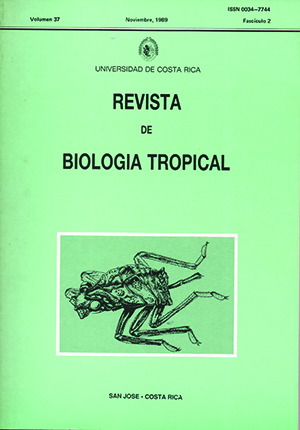Abstract
The development of antibody response against phospholipase A activity of Bothrops asper venom was studied in a group of adult and healthy horses used in the production ofthe polyvalent antivenom at the Instituto Clodomiro Picado. Simultaneously, the general condition of the animals during the immunization schedule was also studied. There was a great individual variability in me ¡mmune response, although most of the horses studied reached the highest neutralizing titer aftrr injection of doses of venom of 30 mg and 50 mg. On the other hand, in horses that had been previously imnmunized and were injected for a second immunization, the highest antibody titer was observed 16-22 days after inoculation. There were only mild alterations in the general condtion of the horses as a consequence of venom inoculation. However, local abscesses, fistules and fibrosis were observed at the site of venom injection. On the basis of the conspicuous individual variability observed, it is proposed that the immune response in horses used in the production of antivenom must be evaluated on individual basis, instead of working with pools of serum samples.
References
Arroyo, O., R. Bolaños & G. Muñoz. 1980. The bacterial flora of venoms and mouth cavities of Costa Rican snakes. Bull. Pan Health Org. 14: 280-285.
Boche, R.D. & F .E. Russell. 1968. Passive hemagglutination studies with snake venom and antivenin. Toxicon 6: 125-130.
Bolaños, R. & L. Cerdas. 1980. Producción y control de sueros antiofídicos en Costa Rica. Bol. Ofic. Sanit. Panam. 88: 189-196.
Gutiérrez, J.M., L. Cerdas, O. Arroyo, E. Rojas, B. Lomonte & J.A. Gen. 1982. Patogénesis y neutralización de los efectos locales inducidos por veneno de la serpiente "terciopelo" (Bothrops asper). Acta Méd. Costar. 25: 255·262.
Gutiérrez, J.M., C.L. Ownby & G.V. Odell. 1984. Pathogenesis of myonecrosis induced by crude venom and amyotoxin of Bothrops asper. Experim. and Molec. Pathol. 40, 367-379.
Gutiérrez, J.M., C. Avila, E. Rojas & L Cerdas. 1988. An alternative in vitro method for testing the potency of the polyvalent antivenom produced in Costa Rica. Toxicon 26,411-413.
Khupulsup, K., N. Poopyruchpong, B. Rechclai & C. Ratanabanangkoon. 1981. A passive hemagglutination test for antibody to Naja naja siamensis toxin 3. Toxicon 19: 863-866.
Theaktson, R.D.G. & H.A. Reid. 1979. Enzyme-linked immunosorbent assay (ELISA) in assessing antivenom polency. Toxicon 17: 511-515.
Comments

This work is licensed under a Creative Commons Attribution 4.0 International License.
Copyright (c) 1989 Revista de Biología Tropical


